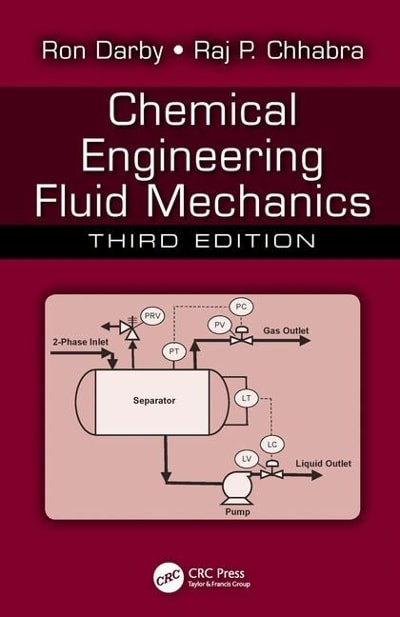Consider a dilute aqueous slurry containing solid particles with diameters from 0.1 to $1000 mu mathrm{m}$ and
Question:
Consider a dilute aqueous slurry containing solid particles with diameters from 0.1 to $1000 \mu \mathrm{m}$ and a density of $2.7 \mathrm{~g} / \mathrm{cc}$, flowing at a rate of $500 \mathrm{gpm}$.
(a) If the stream is fed to a settling tank in which all particles with a diameter greater than $100 \mu \mathrm{m}$ are to be removed, what should the tank diameter be?
(b) The overflow from the settling tank contains almost all of the water plus the fines not removed in the tank. This stream is fed to a centrifuge, which has a diameter of $20 \mathrm{in}$., a length of $18 \mathrm{in}$., and an overflow dam that is 6 in. from the centerline. What speed in rpm should the centrifuge rotate in order to separate all particles with a diameter of $1 \mu \mathrm{m}$ and larger?
(c) If the centrifuge rotates at $2500 \mathrm{rpm}$, what size particles will be removed?
(d) Instead of the tank and centrifuge, the slurry is fed to a rotary drum filter, which has a diameter of $5 \mathrm{ft}$ and a length of $10 \mathrm{ft}$. The drum operates under a vacuum of $10 \mathrm{in}$. $\mathrm{Hg}$, with $35 %$ of its surface submerged in the slurry. A lab test is run on the slurry at a constant flow rate of $100 \mathrm{cc} / \mathrm{min}$, using $50 \mathrm{~cm}^{2}$ of the filter medium. In the test filter, the pressure drop reached $10 \mathrm{~mm} \mathrm{Hg}$ after $1 \mathrm{~min}$ and $80 \mathrm{~mm} \mathrm{Hg}$ after $10 \mathrm{~min}$. How fast should the drum rotate (in rpm) to handle the slurry stream?
Step by Step Answer:

Chemical Engineering Fluid Mechanics
ISBN: 9781498724432
3rd Edition
Authors: Ron Darby, Raj P Chhabra





